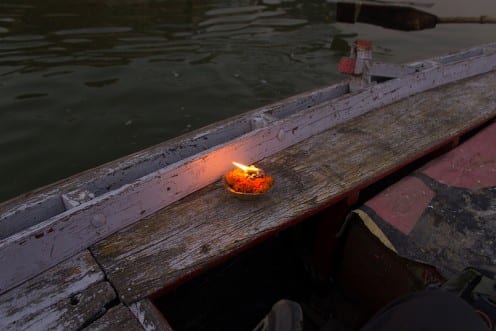Facebook, death and memorialisation
By Daniel Miller, on 13 March 2014

Photo by Rosie O’Beirne (Creative Commons)
Alongside my ethnographic research in The Glades I have now been working for over a year alongside The Hospice of St Francis. When I am in the UK I try to spend a day a week interviewing their patients who are mainly terminal cancer patients. I was delighted to hear this winter that the wonderful hospice director Dr Ros Taylor was awarded an MBE in this year’s honours list. My intention in working for the Hospice was a concern that a project of this size should also have an applied or welfare aspect where we could see the direct benefit. The initial work was simply an attempt to see how the hospice could benefit from new media. The report was published on my website, but once I was working with them I realised that in a way the hospice was the clearest example of what the whole team have endeavoured to demonstrate through this blog.
The hospice movement represents no kind of technical or medical advancement. It is entirely the product of a transformation in collective consciousness. Previously it was assumed that when people knew they were dying this was tantamount to a stage in merely their withdrawal from the world. We talk about ‘investing in our children’ as though there were long-term financial assets. The same logic would condemn the dying as of limited value. The Hospice movement was all about saying that knowing someone is terminal should be seen as an opportunity. It is no longer a medical issue, they will not be cured, instead we can concentrate on their quality of life and make this stage of life, since that is what it is, as enjoyable and fulfilling as it could be. Everything that Dr Taylor says and does demonstrates this, as does my colleague in this research Kimberley McLaughlin a senior manager of the hospice.
On reflection this is perhaps our single most important finding also as anthropologists of social media. People become fixated on the technological advances of new media. What each device can now be capable of – the latest app or smartphone or platform. These certainly feature throughout our work. But the vast majority of our blog posts are not about that. Instead they describe changes in the same collective consciousness: the social uses that people creatively imagine for these media as part of their lives.
The two issues come together in my observations of Facebook in relation to death and memorialisation. One of my early informants was a woman who felt that she wanted to use the experience of terminal cancer to help educate the wider world about her experience. A subject people tend to avoid but need to gain a better understanding of. I last saw her six days before she died and she was quite clear that using Facebook as almost a daily blog had enabled her to do just that. I am hoping (if I obtain the funding) to make a film based on her and other patients who have used Facebook in this manner.
I would be equally positive about the ways people have found to use Facebook in memorialisation and grief. Previously we have tended to use highly formal and religious institutionalised frames for dealing with death. As I argued in my book Tales From Facebook, this was out of synch with changes in our notion of the authenticity of the individual. Where once we took formal posed pictures, now we like to capture images that seem spontaneous, informal and thereby more ‘real’ to us. Similarly we needed a form of memorialisation that contained this element of personalisation and immediacy. People on Facebook can put both serious and jokey memories and do so at a time of their choosing. I find these sites poignant and effective. I don’t find other social media sites, such as Twitter or Instagram, as having the same potential, so I hope we retain this capacity of Facebook.
But the point is that the inventors of Facebook were certainly not thinking about its relationship to death or memorialisation. Rather, as in the case of the invention of the hospice movement, this reflects a change in our collective imagination in what we could potentially do in relation to death and grief. This is why we argue it is anthropology rather than more tech-driven studies of new media that are most suited to understanding what social media actually become. Most of these reports reflect not the technological potential, but the imaginative realisation of social media.
 Close
Close





